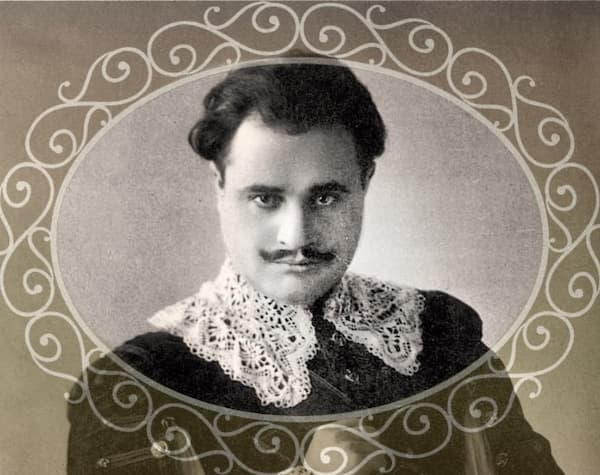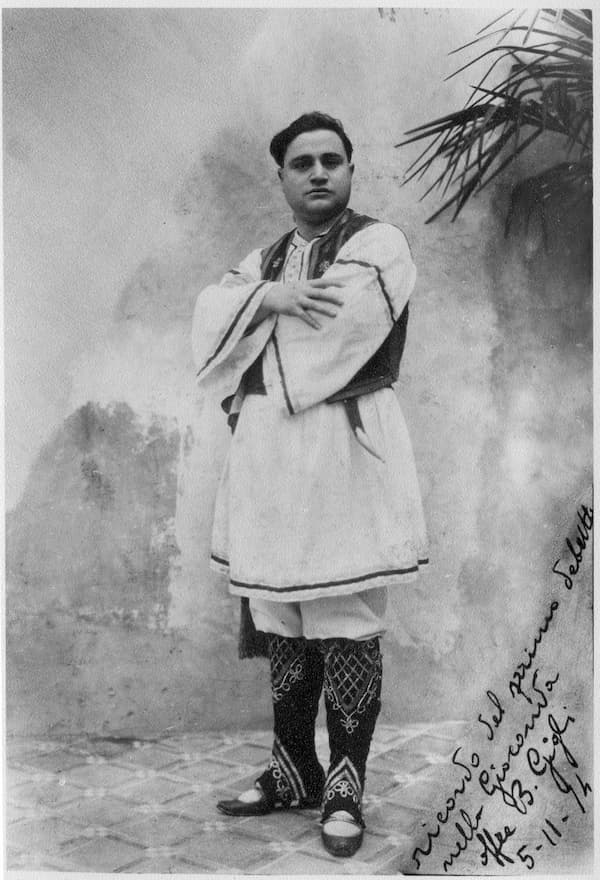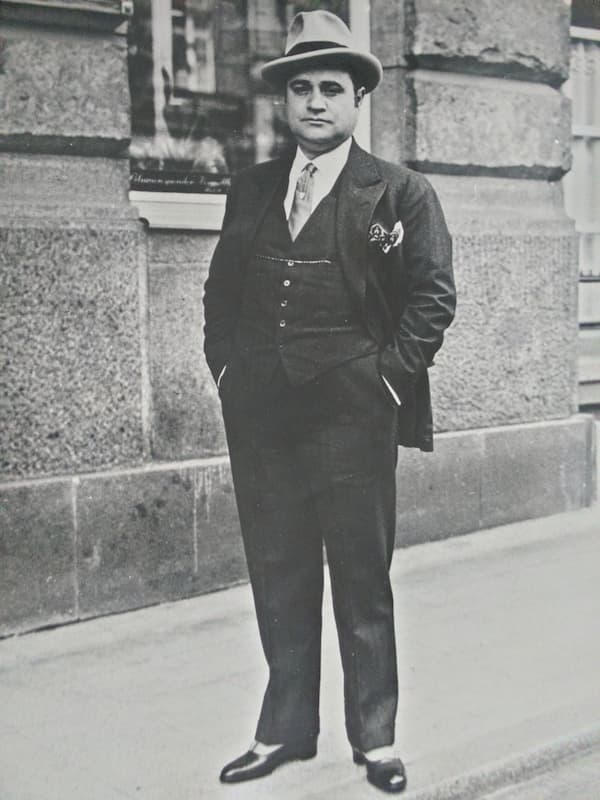Beniamino Gigli, born on 20 March 1890, in Recanati, Italy, emerged from humble beginnings to become one of the most celebrated operatic tenors of the early 20th century. The son of a shoemaker with a passion for opera, Gigli’s extraordinary voice, marked by its lyrical power, warmth, and seamless production, propelled him from the choirs of his local church to the grand stages of the world’s most prestigious opera houses.

Beniamino Gigli
Gigli possessed a lyric tenor of exceptional purity, velvet yet robust, with a shimmering clarity in the upper register and a rich, honeyed warmth in its middle range. His seamless legato, effortless breath control, and his ability to spin long expressive phrases, allowed him to imbue even the most florid passages with a conversational intimacy, while his dynamic pianissimos could hush an auditorium into rapt silence.
After training in Rome, Gigli won a competition in Parma in 1914 and debuted as “Enzo” in La Gioconda. On his birthday on 20 March, let us explore some of his most iconic recordings and performances.
Beniamino Gigli Sings “O sole mio”
Pagliacci “Vesti la giubba”

Beniamino Gigli in La Gioconda, 1914
Beniamino Gigli recorded “Vesti la giubba” from Leoncavallo’s Pagliacci multiple times throughout his career. He beautifully captured Canio’s heartbreak with plenty of dramatic flair, sobbing infections, and a rich tonal palette. To be sure, his lyric tenor shined with its signature traits: a velvety, golden timbre, seamless legato, and a warm resonance that filled the aria’s melodic arcs.
While probably not the most dramatic voice, Gigli carries a luminous clarity, particularly in the middle and upper registers. His tone is rich and rounded, and he avoids the nasal edge that some tenors bring to verismo roles. Nevertheless, he does infuse “Vesti la giubba” with a deeply personal emotional palette, emphasising Canio’s anguish as a betrayed husband forced to perform as a clown. The aria is a captivating vocal jewel in Gigli’s discography, combining unparalleled lyricism and emotive storytelling.
Beniamino Gigli Sings Leoncavallo “Vesti la giubba”
Turandot “Nessun Dorma”
Beniamino Gigli approaches “Nessun dorma,” recorded multiple times, with a lyrical intimacy that contrasts with the heroic bombast later popularised by Pavarotti. This lyrical gem is elegant, introspective and unmistakably Gigli. His interpretation offers masterful control and emotive warmth, offering a Calaf of quiet strength rather than one of triumph.
During Gigli’s time, the aria was not yet the global phenomenon it would later become. As such, it reflects an earlier, more operatic tradition. His performances earned high praise for their lyrical purity and they remain fan-favourites. Some critics do argue that it lacks “the thrilling power expected of Turandot’s climactic moment and reflects the tenor’s limits in a role suited to spinto or dramatic voices.”
Beniamino Gigli Sings Puccini: “Nessun Dorma”
La Bohème “Che gelida manina”

Beniamino Gigli
Beniamino Gigli’s recordings of Rodolfo’s signature aria is a masterclass in lyric sweetness. He infuses the aria with a tender and conversational intimacy, portraying Rodolfo as a sincere lover rather than a grand operatic figure. His phrasing is fluid and natural, with subtle dynamic shifts that mirror Rodolfo’s shy charm.
While some critics argue that Gigli’s approach is too sentimental and soft-edged for Rodolfo’s youthful vigour, it is nevertheless a refined and heartfelt vocal treasure. The strength of his interpretations lies in his seamless technique and tender interpretation, which affirms his enduring mastery of Puccini’s lyricism. For many opera lovers, this recording stands as a timeless testament to the “velvet tenor” at his peak.
Beniamino Gigli Sings Puccini’s “Che gelida manina”
L’elisir d’amor, “Una furtiva lagrima”

Beniamino Gigli, 1925
Recorded in the late 1920s, Gigli’s rendition of “Una furtiva lagrima” from Donizetti’s L’elisir d’amor finds the lyric tenor at its lightest and most radiant. His voice is a crystalline instrument with a silvery sheen and remarkable flexibility. This lighter timbre perfectly suits Nemorini’s tender, love torn character, showcasing the bel canto purity that defined his early career.
Gigli’s mastery shines through in his technical precision. His legato is seamless, stitching the aria’s long, arching phrases into a single, unbroken thread. His pianissimos are a standout feature and delivered with a feather-light touch, showcasing his breath control and vocal finesse. Meanwhile, the cadenza-like flourishes display clean, nimble ornamentation and his diction is pristine. Every clearly articulated syllable enhances the aria’s narrative clarity.
Beniamino Gigli Sings Donizetti’s “Una furtiva lagrima”
Requiem “Ingemisco”
Beniamino Gigli’s participation in Verdi’s Requiem reveals a lesser-known facet of his vocal artistry. He approaches the Requiem with an operatic sensibility, infusing his solos with emotional immediacy and theatrical flair. Gigli’s bel canto training shines in his legato and breath control, sustaining Verdi’s long lines effortlessly.
Gigli’s interpretation is a tour de force of lyric artistry, lush, expressive, technically adept if occasionally flamboyant. His “Ingemisco” stands out for its beauty and finesse, while minor flaws like aspiration and early entrances reflect his personal style over strict precision. Critically acclaimed as a classic, this performance showcases Gigli at his operatic best, making the recording a must-hear for its historical weight and vocal splendour.
Beniamino Gigli’s mastery lies in his unparalleled ability to fuse technical precision with profound emotional resonance, transforming every note into a vessel of lyrical beauty and human feeling. His golden voice and interpretive genius not only defined an era of operatic excellence but continues to captivate listeners, cementing his legacy as one of the 20th century’s most iconic tenors.
For more of the best in classical music, sign up for our E-Newsletter
